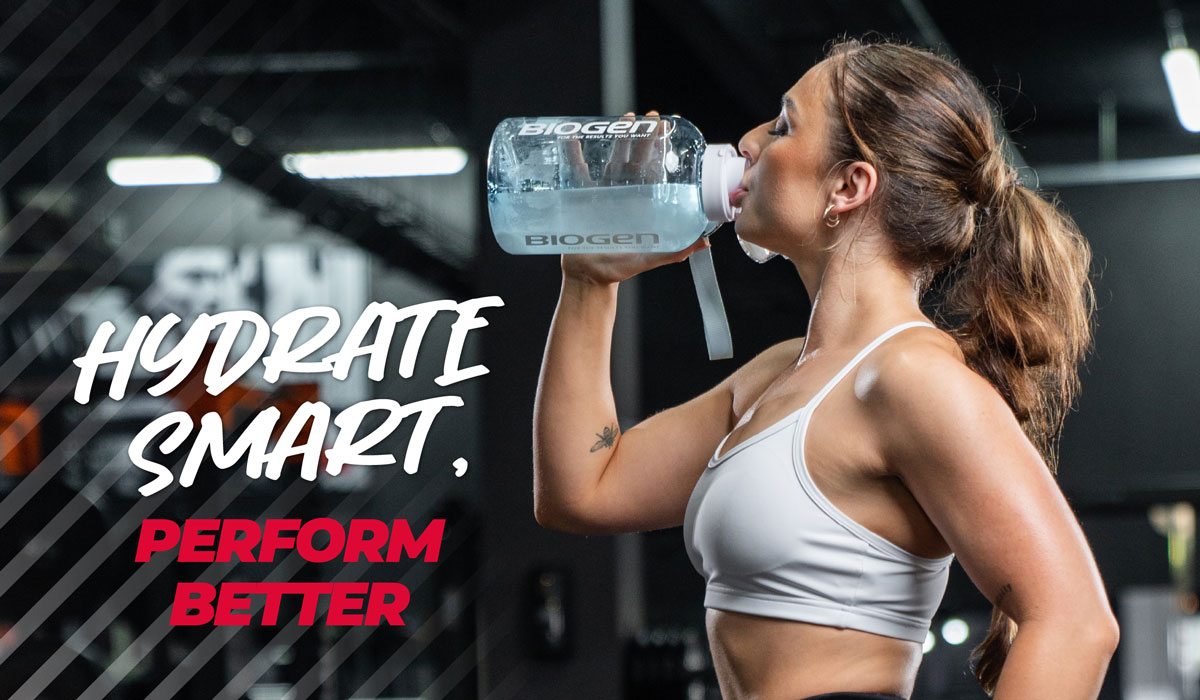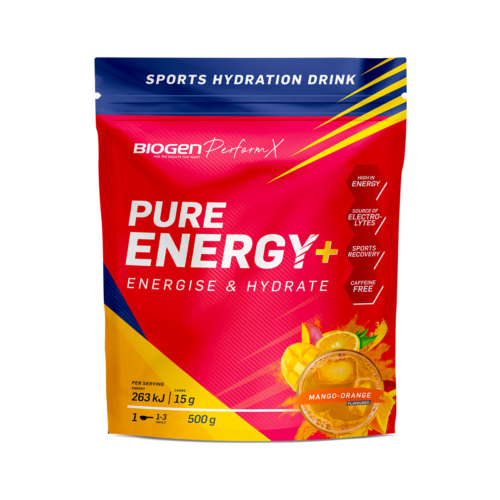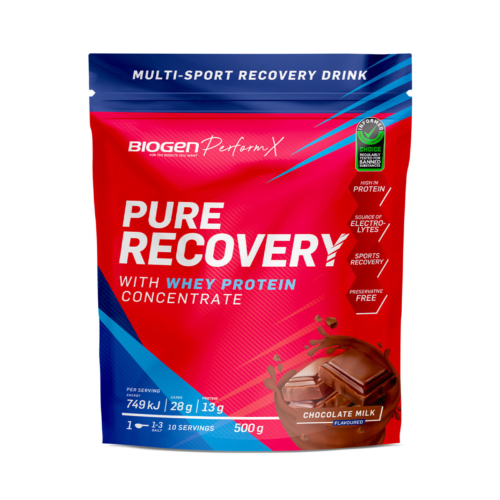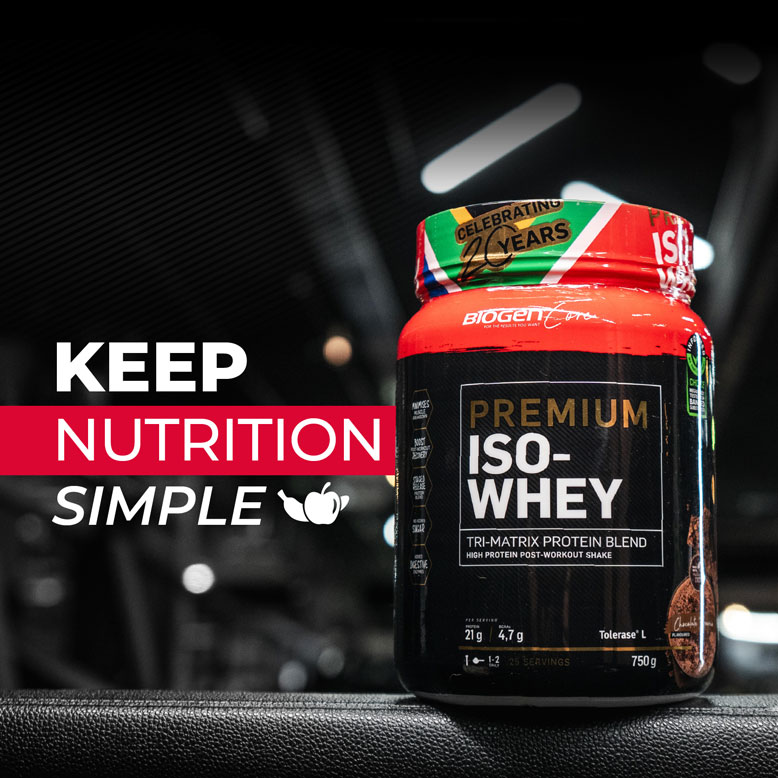
Replacing the fluids lost during intense training and racing requires more than just water.
Hydrating to support peak performance should include electrolyte-enriched solutions that boost fluid absorption and rebalance the minerals needed to support muscle function and energy production.
Sweat Science
When we sweat, we lose water and electrolyte minerals including sodium, chloride, magnesium, calcium, and potassium.
The amount of sweat and electrolytes we lose during exercise is highly individualised and varies depending on multiple physical and environmental factors, such as the duration and intensity of activity, genetics, the clothing we wear, and environmental conditions like temperature and humidity.
In general, though, the more we sweat, the more electrolytes we lose, which is why athletes chasing optimal performance and recovery should replace the minerals lost through sweat.
Role in Hydration
Electrolytes play a critical role in controlling fluid balance, which means they help regulate the movement of water into and out of cells and in the bloodstream¹.
When electrolytes dissolve in body fluids, they become charged particles (ions). These ions create osmotic pressure, which pulls water toward areas where the electrolyte concentration is higher.
Sodium, chloride, and potassium work together to help regulate and maintain this balance, ensuring our cells absorb the fluid we drink during exercise to maintain proper cell volume and function.
Without the right balance, cells can shrink (become dehydrated) or swell and burst (overhydration or hyponatremia).
Other symptoms associated with an electrolyte imbalance include muscle spasms, dizziness, fatigue, nausea, constipation, dark urine, decreased urine output, a dry mouth and smelly breath, dry skin, muscle weakness or stiff and achy joints.
Role in Muscle Function
Fluid balance is also essential for proper nerve impulses and muscle contractions, both of which rely on electrolytes to function correctly¹.
This impacts skeletal muscles, as well as muscle cells in the heart and smooth muscles like those in the digestive system.
Electrolytes like sodium, potassium, calcium, and magnesium are involved in generating and transmitting the signals that serve as the nerve impulse to contract a muscle.
Sodium and potassium work together to generate action potentials (electrical impulses)². When a nerve stimulates a muscle, sodium rushes into the muscle cell, changing the electrical charge. Then potassium flows out to reset the charge. This quick shift in charge triggers the muscle to contract.
Once the muscle cell is electrically activated, calcium is released inside the muscle. Calcium binds to proteins inside the muscle fibres, allowing them to slide past each other and cause contraction. After a contraction, calcium is pumped back into storage, and the muscle relaxes.
Magnesium helps regulate calcium by acting as a natural calcium blocker. As such, it is essential for muscle relaxation and preventing overstimulation or cramps.
Given their role in muscle contractions, a lack of electrolytes or severe dehydration may cause exercise-associated muscle cramps (EAMCs). In these instances, research³ shows that oral rehydration solution that contains electrolytes “appeared to be effective for preventing EAMC”.
Role in Preventing Fatigue
Certain electrolytes are key players in preventing fatigue and supporting energy production, especially during physical activity.
When we deplete electrolytes during physical activity, the impact that has on our hydration status, and our nerve and muscle function can lead to the early onset of fatigue due to the loss of muscle efficiency and the risks associated with muscle cramps and spasms.
As sodium and potassium help regulate blood pressure and circulation⁴, low levels can cause issues with proper circulation, which means less oxygen and nutrients get to working muscles, resulting in fatigue.
From an energy production perspective, certain electrolytes enable the metabolic processes that generate energy at the cellular level.
For instance, without sufficient magnesium, our bodies become less efficient at converting food into a usable form of energy known as ATP (adenosine triphosphate) in muscle cells⁵.
Topping Up Electrolytes
The easiest and quickest way to mix up a rehydration solution for before and after exercise is with an effervescent tab like Biogen Electrolyte+ Fizzy. Simply pop a preservative-free effervescent tablet in a water bottle and let it dissolve – no shaking required!
Every serving will deliver:
- Sodium 437 mg
- Potassium 132 mg
- Calcium 31 mg
- Magnesium 125 mg
A product like Biogen Pure Energy+ offers the perfect combination of simple carbohydrates and electrolytes to energise and hydrate you during training and racing.
With its blend of whey protein concentrate, maltodextrin and electrolytes, Biogen Pure Recovery provides your body with what it needs to support recovery after training or events.
Timing Your Intake
Timing your electrolyte intake can make a big difference in terms of hydration, performance, and recovery.
Based on current research⁶, the best times include:
- Before exercise: Drink some electrolytes in 500–600ml, 1–2 hours before exercise, particularly before long-duration or high-intensity workouts, especially in hot or humid conditions.
- During exercise: For workouts or races that last longer than 90 minutes, or any session with a high sweat-loss rate, consider drinking a carbohydrate drink with added electrolytes every 15–20 minutes. Aim for 150–300 ml per drink.
- After exercise: Drink some electrolytes together with some carbs and protein within 30 minutes of your session or race, especially after long or intense efforts in hot or humid conditions.
References:
- Shrimanker I, Bhattarai S. Electrolytes. 2023 Jul 24. In: StatPearls [Internet]. Treasure Island (FL): StatPearls Publishing; 2024 Jan–. PMID: 31082167.
- Shrimanker I, Bhattarai S. Electrolytes. [Updated 2023 Jul 24]. In: StatPearls [Internet]. Treasure Island (FL): StatPearls Publishing; 2025 Jan-. Available from: https://www.ncbi.nlm.nih.gov/books/NBK541123/.
- Lau WY, Kato H, Nosaka K. Effect of oral rehydration solution versus spring water intake during exercise in the heat on muscle cramp susceptibility of young men. J Int Soc Sports Nutr. 2021 Mar 15;18(1):22. doi: 10.1186/s12970-021-00414-8. PMID: 33722257; PMCID: PMC7962362.
- Perez V, Chang ET. Sodium-to-potassium ratio and blood pressure, hypertension, and related factors. Adv Nutr. 2014 Nov 14;5(6):712-41. doi: 10.3945/an.114.006783. PMID: 25398734; PMCID: PMC4224208.
- Ko YH, Hong S, Pedersen PL. Chemical mechanism of ATP synthase. Magnesium plays a pivotal role in formation of the transition state where ATP is synthesized from ADP and inorganic phosphate. J Biol Chem. 1999 Oct 8;274(41):28853-6. doi: 10.1074/jbc.274.41.28853. PMID: 10506126.
- Latzka WA, Montain SJ. Water and electrolyte requirements for exercise. Clin Sports Med. 1999 Jul;18(3):513-24. doi: 10.1016/s0278-5919(05)70165-4. PMID: 10410838.













